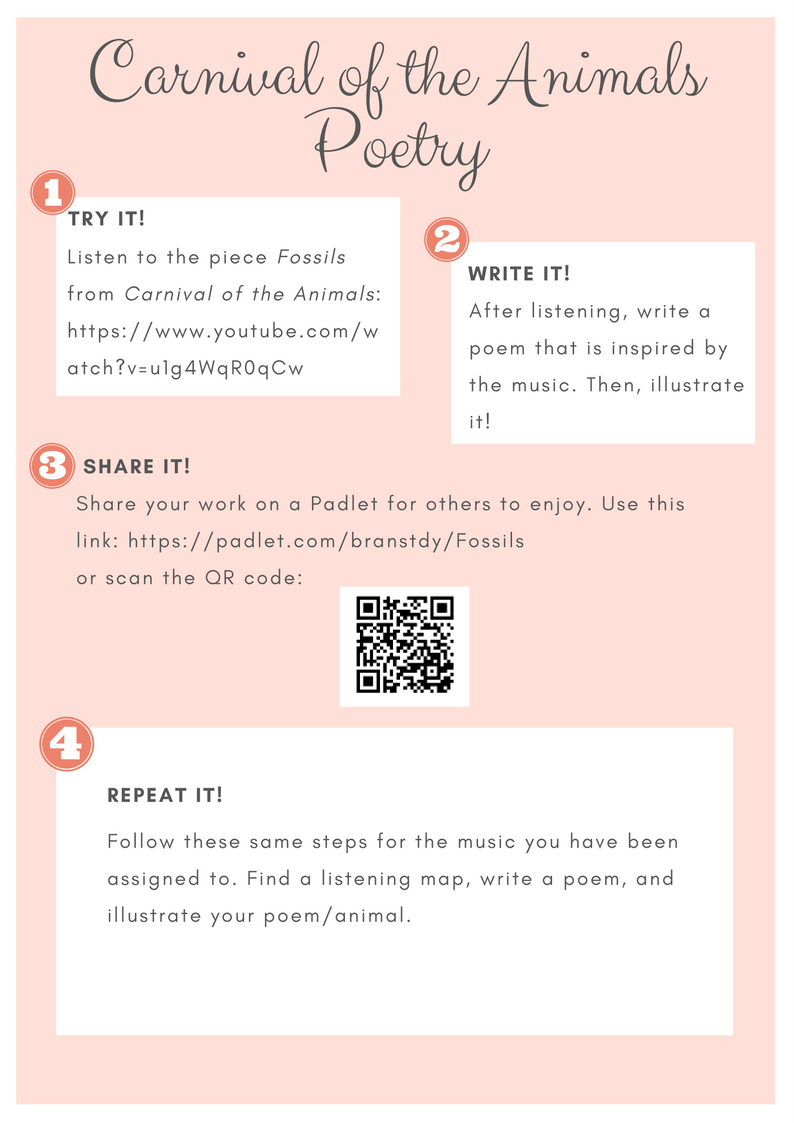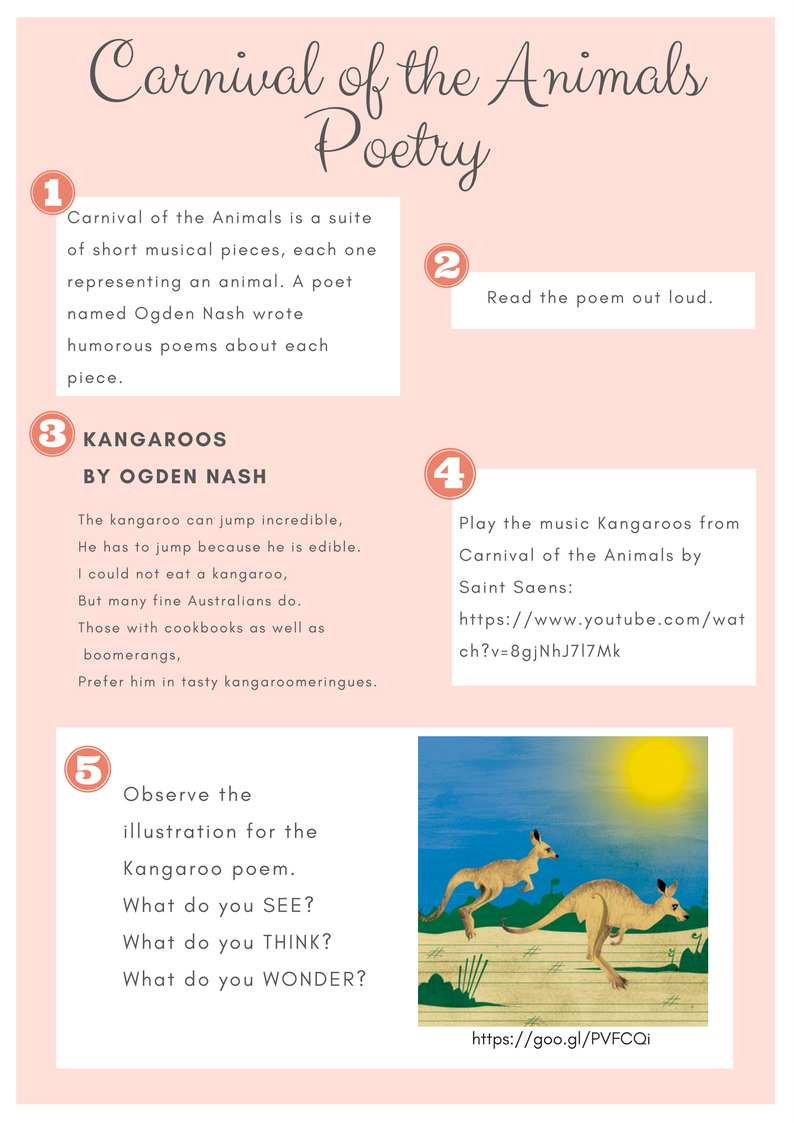Carnival of the Animals in the ELA Classroom
5 Min Read • Literacy
Carnival of the Animals is a musical suite by French composer Camille Saint-Saëns. It is comprised of fourteen short pieces of music, each one representing a different animal. Each piece is very distinct, providing a great starting point for discussing how and why Saint-Saëns chose certain instruments, melodies, tempos, and rhythms and/or mood to depict each animal.
What can you do with Carnival of the Animals?
In addition to the music, Ogden Nash wrote humorous poems to accompany each musical piece. These poems were most famously performed by Leonard Bernstein, and have also been included in numerous picture books of the same title.
So what can you do with this in an elementary classroom besides listen and discuss the music? Create a class slideshow including original poetry and artwork to accompany the music. Here’s how:
Part 1: Introduction
Introduce students to the concept of Saint Saen’s suite. Then, follow this lesson plan with the piece Kangaroos. (Download this PDF for clickable links: Carnival of the Animals Poetry – part 1.)
These steps can be a guide as you connect the poetry, music, and visual arts. As you introduce each step to the whole group, make sure to have students point out their observations, and compare it to the next component. For example, after reading the poem, have students identify the structure of the poem and point out the rhyming words. I also like to use Beers and Probst’s Essential Questions for this poem:
- What surprised me?
- What does the author (poet) think I already know?
- What challenged, changed, or confirmed what I already know?
When moving on to the music, it is great to generate a class brainstorm of what they think it will sound like based on their knowledge of the animal. Have small groups chat about this for a few minutes, and then have volunteers share out. Encourage students to give reasons for their ideas and prompt the class to agree or disagree with each students’ ideas to increase thinking and engagement during the discussion.
If students (or you) are not familiar with listening maps, introduce them as a way to visualize what is happening in the music. As you play the piece, project the video of the listening map and have students follow along. (Or, print this listening map for students to use.) Play it a second time, and have students confirm or reject their predictions about the music. Play it a third time, and have students share out. What did they notice? What assumptions can they make about Saint Saen’s musical choices? What surprised them? What did they like/dislike?
Finally, spend time observing the Kangaroo artwork using the See Think Wonder strategy to generate ideas for students’ own art. Share other artwork based on this poem/piece of music and compare them.
Part 2: Poems and Padlet
Repeat the general ideas of lesson one, but this time, students follow steps one through three on the handout. Depending on the level of your students, you could work through this together as a class, or students could work with a partner to create their own poetry and art. With my third graders, we write this poem collaboratively to scaffold the experience for them. I model how to generate words based on the mood of the music as well as words and phrases that remind me of the animal. Then I demonstrate how to choose my poem format (which they already had experience with) and how to craft my brainstormed words/phrases into a poem that fits my chosen format.
Create a Padlet for students to share their work with the class, or use the link/QR code from the handout below to share with the world. Have students compare and contrast their interpretations of the music. After students listen, create, and compare with classmates. If you have written collaboratively as a class as I did, share Ogden Nash’s poem and other artwork based on the musical piece. Have students notice similarities and differences in the way they interpreted the music, and save the student to student comparison for part three. (Download this PDF for clickable links: Carnival of the Animals Poetry.)

Part Three: Pairing Students
Pair students and assign each a remaining piece of music from Carnival of the Animals. They should follow the same steps as in the first two lessons:
- Think about the animal and brainstorm ideas for what they might hear as well as words that relate to their topic.
- Listen to the piece of music at least three times.
- Write a collaborative poem inspired by the music.
- Create artwork based on the music and/or poem.
To culminate, have students take a picture of their art and insert it onto a slide of a shared PowerPoint or similar presentation tool. Have each group share their poem aloud with their artwork projected, and then play each piece of music for the class. This could also be done as an iMovie or Animoto for students to watch on their own time.
Assessing Student Work
The emphasis of this project focuses on the poetry and the music, so when assessing, I evaluate those two subject areas simultaneously. I base my assessment on the word choices students make, how well they relate to the animal and how well they match the style and mood of the musical piece. This, in turn, tells me whether or not students were able to identify and understand the musical elements.
Resources
Text of Ogden Nash’s Carnival of the Animals poems
Live version of Carnival of the Animals Music
List of Carnival of the Animals Books (Text and Illustrations) to use as models for the project




